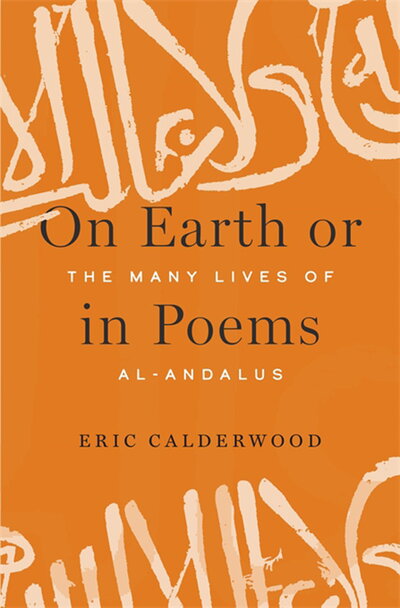
Before it was home to Spain and Portugal, much of the Iberian Peninsula was ruled by a succession of Islamic dynasties for almost 800 years during the Middle Ages. Known as al-Andalus, its influence is still reflected in art and politics today – not only in Spain and North Africa, but also in places far from the historical site of al-Andalus.
Eric Calderwood, a comparative and world literature professor at the University of Illinois Urbana-Champaign, wrote about that influence and how it is used to make sense of the present in his new book, “On Earth or in Poems: The Many Lives of al-Andalus.” The title of Calderwood’s book comes from a famous Palestinian poem about al-Andalus.
“The legacy of al-Andalus is all around us. We don’t have to travel to Spain or North Africa to imagine ourselves as connected to that legacy. In some ways, it comes to us. It just takes paying attention to the clues,” Calderwood said.
The book examines the ways al-Andalus is imagined in modern times to think about feminism, ethnicity, immigration and other topics, and how ideas about al-Andalus are reflected in music from flamenco to hip hop. Calderwood organized his book around the diverse ideas people have about al-Andalus, how those ideas are expressed in culture and why it is useful for people to identify with al-Andalus in particular ways.
One of the dominant views of al-Andalus, particularly in the U.S. and Europe, is as a place of religious tolerance where Muslims, Christians and Jews lived together in relative peace, Calderwood said. It also is viewed as a place of cultural, intellectual and scientific splendor.

He illustrated how the idea of religious coexistence is promoted through allusions to the Mosque of Cordoba in Spain, which dates to the eighth century and is the most famous Muslim heritage site in Europe. These allusions stretch all the way to Central Illinois. When the Central Illinois Mosque and Islamic Center in Urbana was built in the 1980s, its facade was designed to imitate the red-and-white-striped arches in the Mosque of Cordoba. A controversial proposal in 2010 to build an Islamic community center near the Ground Zero site in New York City used the name Cordoba House for the project “as a symbol of what it means for Muslims to coexist in a diverse environment like New York City,” Calderwood said.
The mosque has become a symbol of debates about Muslim heritage in Cordoba and in Spain. For example, in the 1980s and ‘90s, tourist brochures at the site emphasized the Islamic religious architecture of the building and its connection to al-Andalus, Calderwood wrote. Since then, the language describing the building has been modified to highlight its current status as a cathedral and its Christian identity and history, and to promote the debatable claim that a Christian basilica existed at the site prior to the construction of the mosque. The description reduces 500 years of Islamic rule of Cordoba to an “intervention.” The debate concerns both the view of the role of Muslims in Cordoban and Spanish history, and their place in Spanish culture today, Calderwood wrote.
His first introduction to ideas about al-Andalus came shortly after he graduated from high school and moved to Spain to study flamenco, which, according to some practitioners, has its origins in al-Andalus. He said he was surrounded by the material remains of al-Andalus in monuments such as the Alhambra and the Mosque of Cordoba, as well as cultural references.
“All these people in Spain today point to aspects of their culture, indicating it has some connection to this place in the past. Al-Andalus wasn’t just in the past but was very present for these people,” Calderwood said.
In contemporary cultures, the legacy of al-Andalus is seen through music, in the blending of musical styles, in collaborations of performers of different ethnic, religious and cultural backgrounds in ways that evoke the multicultural environment of al-Andalus, and in lyrics or melodies attributed to Andalusi music, he said.
Hip hop artists – particularly Muslim artists living in Spain and France – use the ideas of al-Andalus as a sign of resistance for minority communities against economic or racial power structures. In the U.S., Black hip hop artists use it to connect to ideas of Black creativity and excellence, Calderwood said.
In his book, Calderwood also examined ideas about race and ethnicity in North Africa and the Middle East. Arabs look at al-Andalus as a symbol of cultural identity associated with Syria and the Middle East, downplaying Islam’s role and sidelining other ethnic groups, particularly North African Berbers.
“’The Arab al-Andalus has served to make al-Andalus whiter, less religious and more compatible with dominant notions of Western identity,” Calderwood wrote.
Feminists in the Middle East have looked to al-Andalus as a place where women had exceptional freedom in the Muslim world. It gives them a history of feminist thought that is not tied to Europe or the U.S., he said.
Palestinian writers have used al-Andalus as a metaphor for their homeland and for loss, occupation and cultural erasure, as well as a call to resistance and a speculative image of what Palestine might look like in the future, he said.
To Calderwood, al-Andalus is “a symbol of living with contradiction and understanding that your idea about living with the past is not the same as someone else’s idea of living with the past. It’s less about learning to tolerate difference and more about learning to tolerate contradiction.”
Jodi Heckel, Illinois News Bureau
Editor's note: This story first appeared on the Illinois News Bureau website.